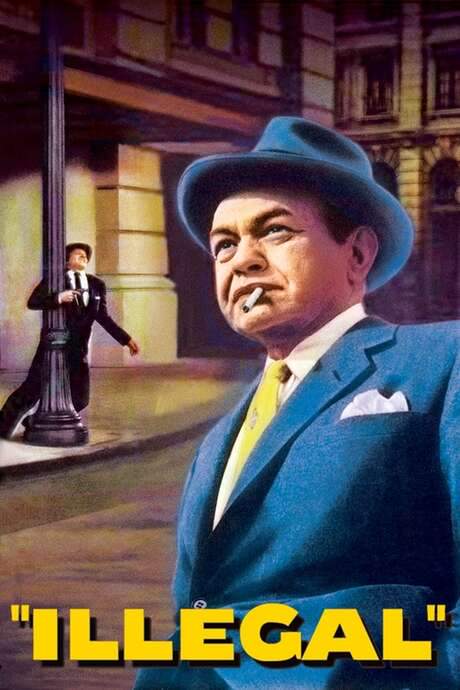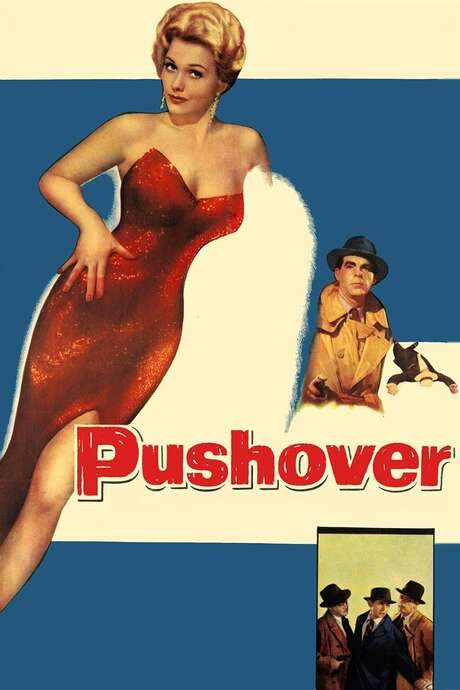
Knock on Any Door
Year: 1949
Runtime: 100 mins
Language: English
Director: Nicholas Ray
It will shock you but it will hold you spellbound to the end! An attorney defends a hoodlum of murder, using the oppressiveness of the slums to appeal to the court.
Warning: spoilers below!
Haven’t seen Knock on Any Door yet? This summary contains major spoilers. Bookmark the page, watch the movie, and come back for the full breakdown. If you're ready, scroll on and relive the story!
Knock on Any Door (1949) – Full Plot Summary & Ending Explained
Read the complete plot breakdown of Knock on Any Door (1949), including all key story events, major twists, and the ending explained in detail. Discover what really happened—and what it all means.
Andrew Morton Humphrey Bogart is a sharp-talking lawyer who, despite the objections of his partners, agrees to take the case of Nick Romano John Derek, a troubled young man from the slums. Morton’s decision is driven partly by a shared background with Nick and partly by guilt over a partner’s earlier misstep in the trial of Nick’s father. The case centers on a brutal charge: Nick stands accused of shooting a police officer, a crime that could carry the death penalty if he is convicted. Morton steps into a courtroom where the odds seem stacked against him and where the weight of Nick’s upbringing weighs heavily on the jury.
Nick Romano’s life unfolds through flashbacks, painting a portrait of a youth steeped in petty crime and rough streets. The recollections reveal a pattern of small-time offenses that shape the harsher choices he makes later. Back home, Morton’s wife, Adele Morton Candy Toxton, urges Morton to try to reform Nick by taking responsibility for him beyond the courtroom. This leads to a fateful turn: Nick robs Morton of $100 after a fishing trip, an act that complicates the defense and foreshadows the struggles ahead. Not long after, Nick marries Emma Allene Roberts, and he attempts to rebuild his life by taking various jobs and rejecting some of his former impulses.
The couple’s attempts at stability are tested as Nick struggles to stay on a straight path. He is repeatedly fired from jobs for his stubborn nature, and his efforts to provide for Emma—such as buying her jewelry—are undermined by his own impulses and his penchant for gambling. A pivotal moment comes when he abandons a steady job after an outburst at his boss, deepening the perception that he cannot escape his past. Believing in a chance at a normal life, Nick and Emma conceive a child, yet the pressures and temptations of a hard-edged world pull him back toward old habits. The most harrowing turn arrives when Nick, feeling cornered and without hope, walks away from the possibility of a safer future, muttering his notorious motto: “Live fast, die young, and have a good-looking corpse.”
“Live fast, die young, and have a good-looking corpse.”
As the trial moves forward, Morton’s strategy hinges on a social argument: slums breed crime, and society bears responsibility for people driven to desperate acts. He insists that Nick is a victim of deprivation rather than an inherently murderous killer, hoping to soften the jurors’ hearts and frame the defendant as someone shaped by harsh circumstances rather than as a cold-blooded killer. The seasoned District Attorney Kerman [George Macready] relentlessly presses Nick with a barrage of questions, challenging Morton’s vision of Nick’s humanity. Under the harsh, persistent interrogation, Nick finally confesses to the act, shattering Morton’s faith in innocence and forcing a dramatic shift in the defense’s approach.
Despite Morton’s plea for sympathy and reform, the court remains focused on the concrete facts and Nick’s own admission. In a moment of candor, Nick chooses to change his plea to guilty, a decision that marks a turning point in the case. As the sentencing hearing unfolds, Morton pivots to a broader appeal, highlighting the bleakness of life on the margins and urging the court to consider the systemic factors that can lead someone to pass through doors into crime. Yet the gravity of the crime lingers, and Nick is ultimately condemned to die in the electric chair. In a final, quiet scene, Morton visits Nick before the execution, bearing witness as Nick strides down the corridor toward the death chamber, a stark reminder of the human cost at the heart of the legal battle.
Last Updated: October 09, 2025 at 11:20
Unlock the Full Story of Knock on Any Door
Don't stop at just watching — explore Knock on Any Door in full detail. From the complete plot summary and scene-by-scene timeline to character breakdowns, thematic analysis, and a deep dive into the ending — every page helps you truly understand what Knock on Any Door is all about. Plus, discover what's next after the movie.
Knock on Any Door Timeline
Track the full timeline of Knock on Any Door with every major event arranged chronologically. Perfect for decoding non-linear storytelling, flashbacks, or parallel narratives with a clear scene-by-scene breakdown.

Similar Movies to Knock on Any Door
Discover movies like Knock on Any Door that share similar genres, themes, and storytelling elements. Whether you’re drawn to the atmosphere, character arcs, or plot structure, these curated recommendations will help you explore more films you’ll love.
Explore More About Movie Knock on Any Door
Knock on Any Door (1949) Scene-by-Scene Movie Timeline
Knock on Any Door (1949) Movie Characters, Themes & Settings
Knock on Any Door (1949) Spoiler-Free Summary & Key Flow
Movies Like Knock on Any Door – Similar Titles You’ll Enjoy
Knock Out (1984) Plot Summary & Ending Explained
Your Honor (1000) Ending Explained & Film Insights
Side Street (1949) Story Summary & Characters
Cry Danger (1951) Film Overview & Timeline
The Doorway to Hell (1930) Story Summary & Characters
Kiss of Death (1995) Story Summary & Characters
The Mob (1951) Plot Summary & Ending Explained
711 Ocean Drive (1950) Spoiler-Packed Plot Recap
Illegal (1955) Movie Recap & Themes
Kiss of Death (1947) Detailed Story Recap
Kiss Tomorrow Goodbye (1950) Story Summary & Characters
Moonrise (1948) Plot Summary & Ending Explained
Shield for Murder (1954) Spoiler-Packed Plot Recap
Pushover (1954) Ending Explained & Film Insights
Guilty Bystander (1950) Story Summary & Characters

















